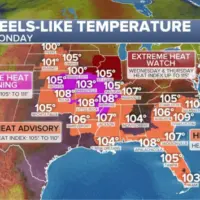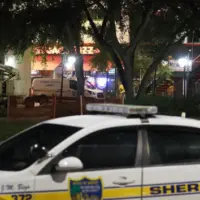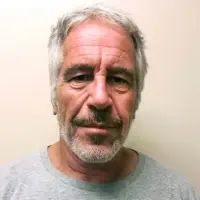
(NEW YORK) — As parts of the Midwest continued to experience catastrophic flooding overnight and into Monday, dangerous heat and humidity are expected to set in this week.
Overnight, a flash flood emergency was declared in central Illinois for catastrophic flooding as rain fell at rates of 2 to 3 inches per hour. The area in and surrounding Brownstown, Illinois, seems to have taken the brunt of the rapid rainfall that made streets impassable.
That flash-flood emergency has since expired, and light rain continued to fall across central Illinois early Monday morning.
The St. Louis, Missouri, metro area was also under a flash flood warning overnight, with rainfall rates of 2 to 3 inches per hour. The rainfall total as of 5 a.m. was around 1.25 inches, but additional heavy rain is possible on Monday.
A slew of “considerable” flash flood warnings were issued in the east-central Missouri region on Monday morning — including for Montgomery City, where 3 to 6 inches of rain had fallen and more was expected.
Around 8 million people from northeast Missouri to western Kentucky and West Virginia were under a flash flood watch on Monday.
Heavy rain also fell Sunday in Dover, Maryland, where the finish of Sunday’s NASCAR Cup Series race at Dover Motor Speedway was delayed for 56 minutes.
Extreme precipitation events jump 60% in the Northeast
This summer has been one of extreme flooding throughout much of the United States with multiple 100-year rainfall events.
While meteorologists cannot say for sure what is causing this summer’s record rainfall, scientist have surmised that human-amplified climate change is causing extreme rainfall events to become more frequent and more intense.
Human-amplified climate change has contributed to increases in the frequency and intensity of the heaviest precipitation events across nearly 70% of the United States, according to the U.S. Fifth National Climate Assessment.
In the Midwest, extreme precipitation events have increased by about 45% in recent decades, the second largest regional increase in the nation, according to the assessment. Extreme precipitation events are very rare, defined as the top 1% of daily extreme precipitation events.
In the Northeast, extreme precipitation events have increased by about 60% in recent decades, the largest regional increase in the United States. And in the Southeast, extreme rainfall events have jumped about 37% in recent decades, according to the assessment.
90 million people bracing for dangerous heat
Meanwhile, 90 million people in the Midwest and South are bracing for widespread high levels of heat and humidity this week that is potentially dangerous to human health.
Multiple days of extreme heat warnings are in place from Kansas to Missouri and down the Mississippi River Valley to Mississippi. This includes St. Louis, Tulsa, and Memphis where heat indices, which factor in humidity, could make it feel 111 degrees on Monday.
In Kansas City, the heat index could climb to 107 through Thursday.
From South Dakota to Nebraska, heat indices could reach 102 to 108 on Monday and Tuesday.
Much of the South, from Louisiana to Florida and up through the Carolinas, are under a heat advisory as the heat indices are expected to range from 108 to 112 on Monday.
This heat and humidity will continue through much of the week for the Midwest and South.
Chicago, where an extreme heat watch is in place, could feel like up to 110 on Wednesday and Thursday.
For the Northeast, the week will start on the cooler side with seasonal or below-average temperatures on Monday and Tuesday — but heat from the Midwest is expected to surge east later this week.
On Friday, near-record high temperatures are possible along the I-95 corridor from Philadelphia to Boston, including New York City, with possible highs in the mid to upper 90s.
New York City could break a daily temperature record on Friday of 97 degrees, set in 1999.
A heat wave consisting of at least three consecutive days of temperatures in the 90s is expected to invade New York City from Thursday to Saturday. Nighttime low temperatures will only cool to the upper 70s, making it more dangerous for those without access to air conditioning.
Copyright © 2025, ABC Audio. All rights reserved.














